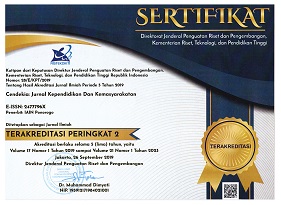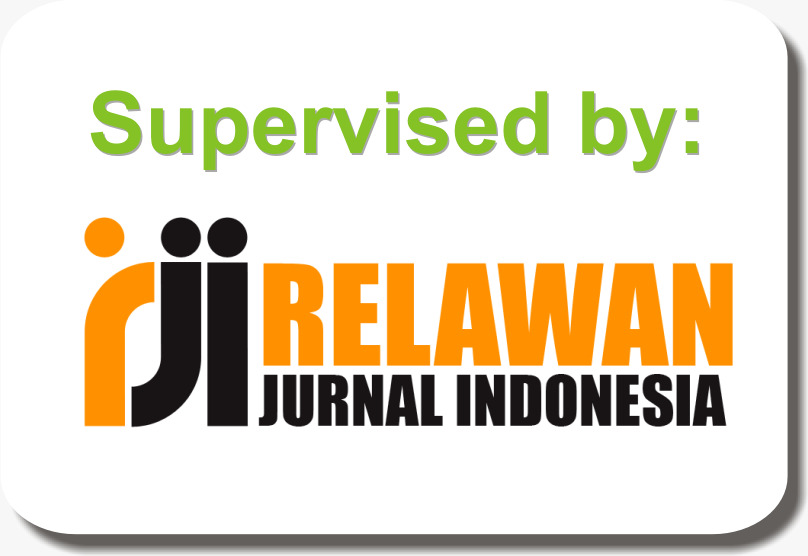Pembelajaran Tematik Integratif IPA dan IPS di Madrasah Ibtidaiyah (MI) dalam Kurikulum 2013
DOI:
https://doi.org/10.21154/cendekia.v14i1.617Keywords:
Tematik, kurikulum, IPA, IPS.Abstract
This research is inspired by a question: why does curriculum 2013 using integrated thematic learning. To address this question, a philosophical, psychological, and juridical basis should be discussed. By understanding those things, integrated thematic learning is suited with curriculum 2013. As the description above, this study is to focus on how the integrated thematic learning at MI level is implemented because this learning will become a main model that educators should develop the curriculum 2013. Referring to Integrated thematic learning of curriculum 2013, science and social studies are not removed but they are integrated based on theme. Those studies will be topics of all subjects in MI. This integration is done in two points: (1) attitude, skill, and knowledge integration in learning process and (2) integration of basic concepts that are closely related. The theme makes a meaning among basic concepts so the students do not learn partially. Therefore, science and social studies give a whole meaning to the learners as reflected at the available theme
: انطلقت هذه الدراسة من السؤال "لما لابد أن يكون تطبيق المنهج الدراسي 2013 على أساس التعليم الوموضوعي الموØّد" ØŸ . لإجابة هذا السؤال لابد من دراسة أسسه الÙلسÙية والنÙسية والØكمية، ÙبالÙهم العميق لهذه الأسس الثلاثة Ùالتعليم الموضوعى الموØّد هو المناسب للمنهج الدراسي 2013. وعلى هذا الأساس Ø£Ùجريت هذه الدراسة مركزّة ÙÙŠ "كي٠يكون التدريس الموضوعي الموØّد ÙÙŠ مستوى المدرسة الإبتدائية "ØŒ لأن هذا النموذج من التدريس هو نموذج رئيس ويجب على المدرس تطويرها لأجل تطبيق النهج الدراسي 2013. ÙˆÙÙŠ المنهج الدراسي 2013ØŒ كانت مادة علم الطبيعة وعلم الإجتماع لا تØØ°Ùان وإنما تÙÙˆØّدان على أساس الموضوع. أصبØت هاتان المادتان موضوع دراسة ÙÙŠ جميع المواد الدراسية ÙÙŠ المدارس الإبتدائية. ويكون هذا التوØيد والتمزيج ÙÙŠ جانبين، الأول ،التمزيج الموقÙÙŠ والمهاري والمعلومات ÙÙŠ عملية التعليم، والثاني تمزيج المÙاهيم الأساسية المتعلقة بها. كان الموضوع جمع شتّى المÙاهيم الأساسية Øتى لا يدرس الطلاب المÙاهيم الأساسية Ù…Ùرّقة. بهذا كان تدريس علم الطبيعة وعلم الإجتماع يعطيان الطلاب المعنى الموØّد كما يظهر ذلك ÙÙŠ المواد الدراسية المتنوعة
Downloads
Published
Issue
Section
License
Copyright & License
Please find the rights and licenses in Cendekia: Jurnal Kependidikan dan Kemasyarakatan. By submitting the article/manuscript, the author(s) agree with this policy. No specific document sign-off is required.
1. License
The non-commercial use of the article will be governed by the Creative Commons Attribution license as currently displayed on the Creative Commons Attribution-NonCommercial 4.0 International License.
2. Author(s)' Warranties
The author warrants that the article is original, written by the stated author(s), has not been published before, contains no unlawful statements, does not infringe the rights of others, is subject to copyright that is vested exclusively in the author and free of any third party rights, and that any necessary written permissions to quote from other sources have been obtained by the author(s).
3. User/Public Rights
The spirit of Cendekia: Jurnal Kependidikan dan Kemasyarakatan is to disseminate articles published as free as possible. Under the Creative Commons license, Cendekia: Jurnal Kependidikan dan Kemasyarakatan permits users to copy, distribute, display, and perform the work for non-commercial purposes. Users will also need to attribute authors and Cendekia: Jurnal Kependidikan dan Kemasyarakatan on distributing works in the journal and other media of publications. Unless otherwise stated, the authors are public entities as soon as their articles got published.
4. Rights of Authors
Authors retain all their rights to the published works, such as (but not limited to) the following rights;
- Copyright and other proprietary rights relating to the article, such as patent rights,
- The right to use the substance of the article in own future works, including lectures and books,
- The right to reproduce the article for own purposes,
- The right to self-archive the article,
- The right to enter into separate, additional contractual arrangements for the non-exclusive distribution of the article's published version (e.g., post it to an institutional repository or publish it in a book), with an acknowledgment of its initial publication in this journal (Cendekia: Jurnal Kependidikan dan Kemasyarakatan).
5. Co-Authorship
If the article was jointly prepared by more than one author, any author submitting the manuscript warrants that he/she has been authorized by all co-authors to be agreed on this copyright and license notice (agreement) on their behalf and agrees to inform his/her co-authors of the terms of this policy. Cendekia: Jurnal Kependidikan dan Kemasyarakatan will not be held liable for anything arising due to the author(s) internal dispute. Cendekia: Jurnal Kependidikan dan Kemasyarakatan will only communicate with the corresponding author.
6. Royalties
Being an open accessed journal and disseminating articles for free under the Creative Commons license term mentioned, the author(s) are aware that Cendekia: Jurnal Kependidikan dan Kemasyarakatan entitles the author(s) to no royalties or other fees.
7. Miscellaneous
Cendekia: Jurnal Kependidikan dan Kemasyarakatan will publish the article (or have it published) in the journal if the article's editorial process is completed. The editors of Cendekia: Jurnal Kependidikan dan Kemasyarakatan may modify the paper to a style of punctuation, spelling, capitalization, referencing, and usage that deems appropriate. The author acknowledges that the article may be published so that it will be publicly accessible, and such access will be free of charge for the readers, as mentioned in point 3.

















